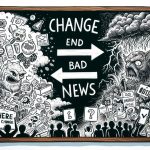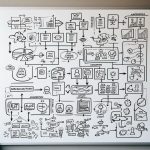Agile is all about adaptability, collaboration, and continuous improvement-but what if I told you that your brain is actively working against all of that? Yeah, fun times. Cognitive biases are the sneaky mental shortcuts that make us think we’re being rational when, in reality, we’re just running faulty mental software. These biases don’t just mess with individual decisions-they can derail entire Agile teams. So, let’s expose the 20 biggest offenders.
1. Anchoring Bias
First impressions matter, but they shouldn’t matter that much. If the first estimate in sprint planning is 40 story points, suddenly every other estimate gets pulled toward it, even if it’s way off. Solution? Use planning poker and blind estimates to reduce anchoring.
2. Availability Heuristic
“We don’t need to refactor-remember that one time we shipped fast and it was fine?” Just because something worked once doesn’t mean it will again. Make decisions based on data, not just the loudest example in your head.
3. Bandwagon Effect
Ever watched an entire team agree with the loudest voice in the room? Welcome to the bandwagon effect, where groupthink kills innovation. Encourage dissenting opinions and create a safe space for alternative ideas.
4. Blind-Spot Bias
If you’re reading this thinking, “Oh yeah, I know people who do that,” congrats, you just proved blind-spot bias. You see biases in others, but not in yourself. The fix? Actively seek feedback and challenge your own thinking.
5. Choice-Supportive Bias
You picked Jira over Azure DevOps, and now you’ll defend it to the death, even if it’s making everyone miserable. Recognize when loyalty to past choices is getting in the way of better decisions.
6. Clustering Illusion
Seeing patterns that aren’t there? “Every time we deploy on a Friday, something breaks!” Correlation isn’t causation. Use real data to analyze trends before making process changes.
7. Confirmation Bias
If you only seek out evidence that supports your opinion (“See? Every article says SAFe is the best!”), you’re filtering reality. Seek out opposing views and challenge assumptions.
8. Conservatism Bias
“We’ve always done it this way.” If those words ever leave your mouth, congratulations, you’re resisting new evidence. Agile is about inspecting and adapting, not “inspecting and ignoring.”
9. Information Bias
More data isn’t always better. If you’re collecting reports no one uses, you might be suffering from information bias. Ask: “Is this data helping us make better decisions?”
10. Ostrich Effect
Ignoring problems doesn’t make them go away. If tech debt is piling up and you keep “focusing on new features,” you’re burying your head in the sand. Address issues before they bite you.
11. Outcome Bias
“We delivered on time, so the process must be perfect!” Not necessarily. Just because you got lucky once doesn’t mean your approach was sound. Focus on how success happened, not just that it did.
12. Overconfidence
“This release will go smoothly!” Famous last words. Confidence is great, but overconfidence leads to poor risk assessment. Build in contingency plans and assume Murphy’s Law applies.
13. Placebo Effect
Thinking something works doesn’t mean it actually does. “This new Agile framework will fix everything!” No, it won’t-unless you change behaviors and culture alongside it.
14. Pro-Innovation Bias
Shiny new tools and methodologies are tempting, but don’t overestimate their benefits while ignoring the downsides. Will that AI-powered backlog grooming tool really help, or are you just chasing trends?
15. Recency Bias
Recent sprints influence our thinking too much. “Last sprint went great, so we’re totally on track!” Maybe. Or maybe you’re ignoring bigger trends. Look at long-term data, not just last week’s results.
16. Salience Bias
You remember dramatic failures more than routine successes. “Remember that one time we tried Kanban and everything fell apart?” That one failure doesn’t mean Kanban is bad-don’t let one memory define your choices.
17. Selective Perception
You see what you expect to see. If you believe a certain team member is “slacking,” you’ll find evidence to confirm it-even if they’re not. Approach feedback with an open mind.
18. Stereotyping
“Developers don’t care about business goals!” “Product owners just make up requirements!” These assumptions create division. Treat individuals as people, not roles.
19. Survivorship Bias
You only hear about the successful Agile transformations, not the ones that failed. If you think scaling Agile is easy, you might be ignoring all the companies that tried and crashed.
20. Zero-Risk Bias
No decision is risk-free. “Let’s just keep doing what we’re doing-it’s safer.” But not evolving is its own risk. Agile is about making informed bets, not eliminating risk entirely.
So, Now What?
Awareness is half the battle. The next time you’re in a retrospective, planning session, or leadership meeting, watch for these biases creeping in. Challenge assumptions. Ask better questions. And if all else fails, just assume you’re biased about something and go from there.







